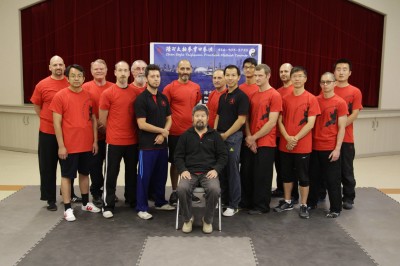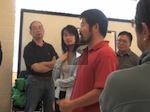| Instructors: | Master Chen Zhonghua, Instructor Chen Xu, Instructor Ling Zili |
| Date: | Dec 15-16, 2018 |
| Time: | 9:00am to 5:30pm |
| Location: | DJKJ Kung Fu Academy 34 Rosebery Avenue, Rosebery NSW 2018 |
| Topics: | Theory, Foundations, form (yilu), applications and push hands |
| Fee: | $380 for 2 days, $220 for 1 day. |
| Suggested preparation for first-timers, get yourself familiar with the following: | |
|
|
| For more information and registration, please contact: Brian Chung practicalmethodau@gmail.com +61 423 035 857 |














